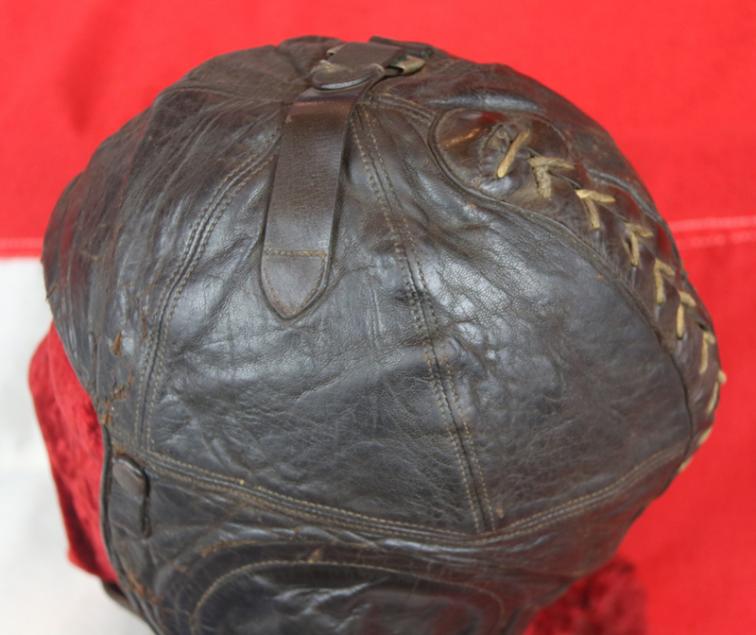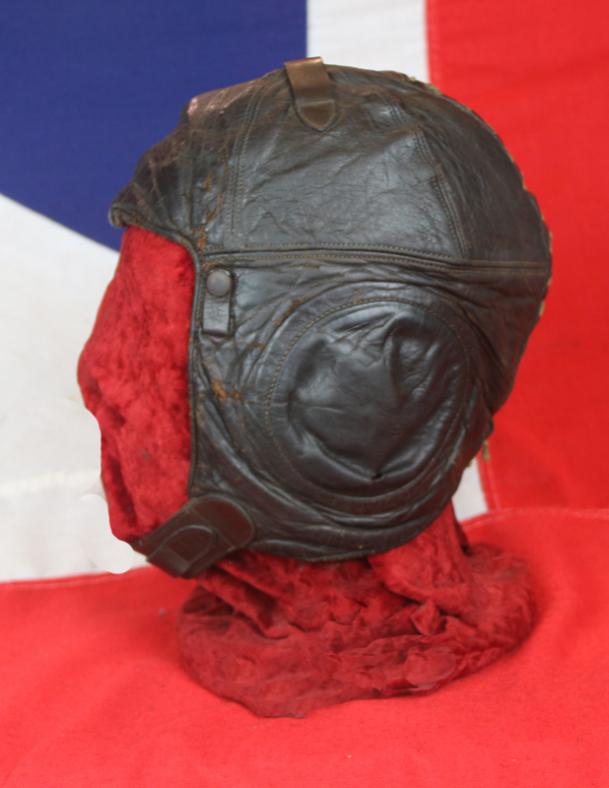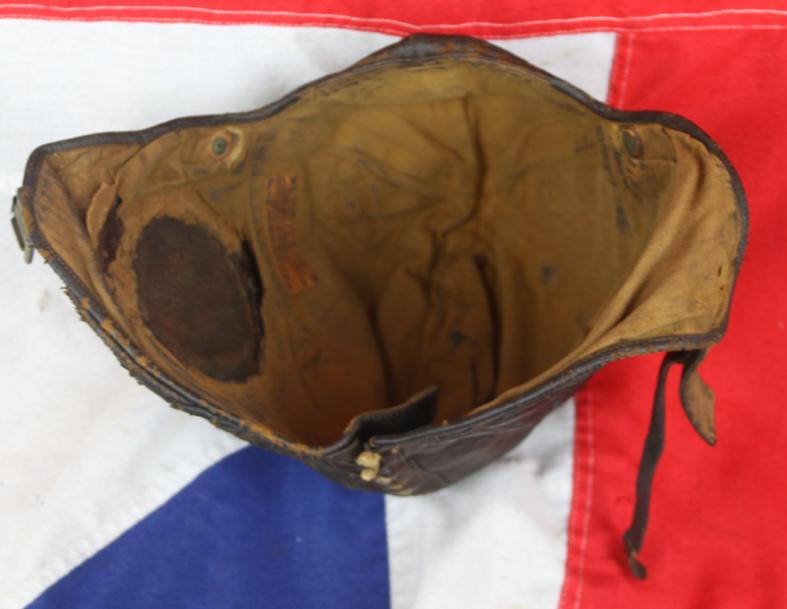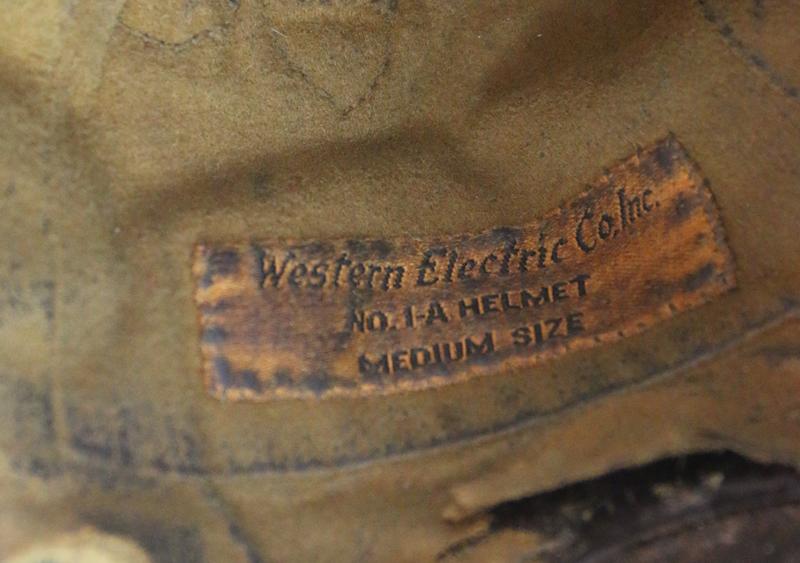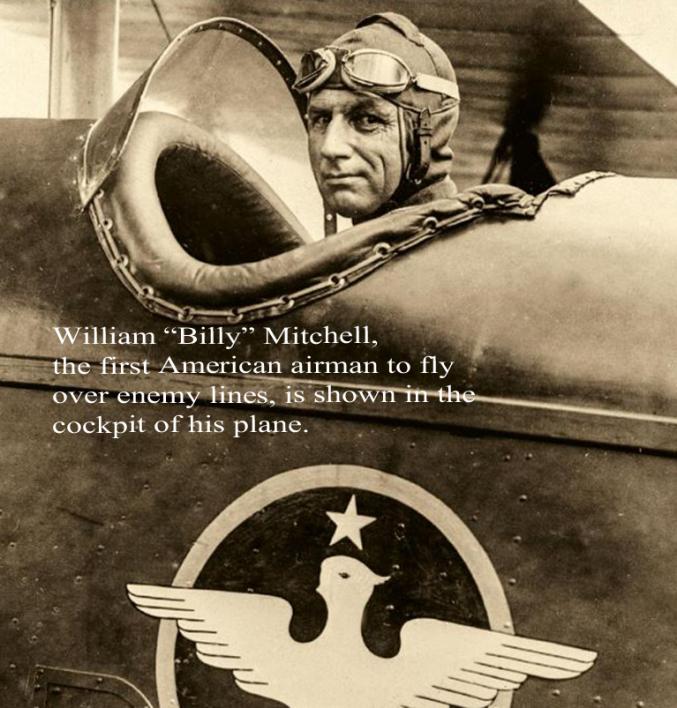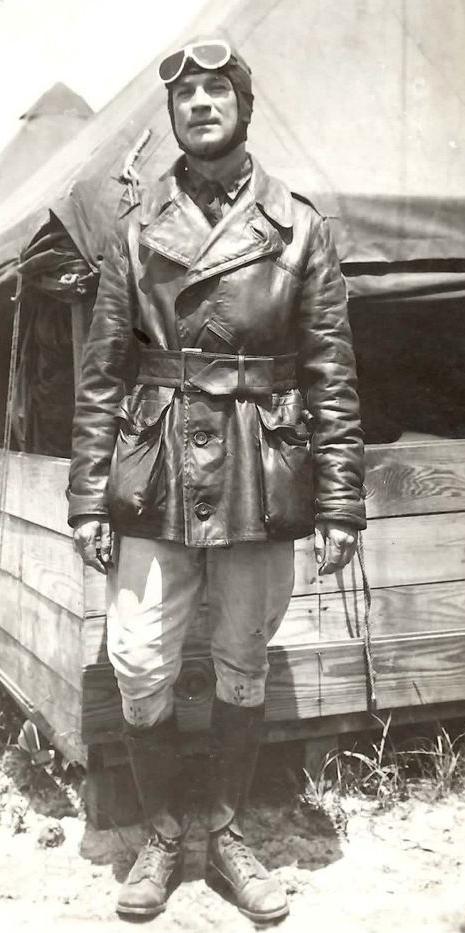A Very Important Piece of US Aeronautical Pilot Headgear. An Original, WW1, 1917 United States Air Service Pilot's Flying Service Helmet. In Exceptional Condition For It’s Age, A Remarkable & Rare American Aviation History Museum Piece.
The first pilot's helmet made, in WW1, for the US Army Air Service, and designed for service use with electric earphones. U.S. Air Service, Western Electric Type, 1-A Flying 1917 Patt U.S. Air Service Leather Flying Helmet.
The Type 1-A Flying Helmet was the first flying helmet standardized by the United States Army Air Service in 1917. It remained in use throughout the mid-1920s.
A similar example, also with earphones lacking, is in the Smithsonian National Air and Space Museum, the helmet was worn by Lt. Byron M. Bates. All The earliest US pilots flew with their helmets without the optional earpieces fitted, {see the photos in the gallery}
A WWI U.S. Air Service Western Electric Type 1-A Flying Helmet and Airplane, Interphone Type S.C.R. 57. The Western Electric Type 1-A was the first helmet to incorporate radio telephone communication equipment.
The russet brown leather helmet is lined in flannel and laces in the back for a snug fit. The crown of the helmet is also fitted with a strap and buckle for further adjustment. There are leather housings for earphones mounted on each side (earphones lacking) and coverted in leather. Tag mounted on the inside reads "Western Electric Co. Inc. / No. 1-A Helmet / Medium Size".
William Thaw {see his photo in the gallery} came from one of the 100 wealthiest families in the United States. During her lifetime, William Thaw’s remarkable grandmother donated $6 million to charitable causes, and in 1913 her grandson soloed in a Curtiss hydro aeroplane, bought for him by his dad.
When the war began, he went to France hoping to join the French air service, but settled for the French foreign legion and fought in the trenches for months until the air service made him an observer. Despite bad eyesight, Thaw became an ace, and is probably the first American to fly in combat.The first U.S. aviation squadron to reach France was the 1st Aero Squadron, which sailed from New York in August 1917 and arrived at Le Havre on September 3. A member of the squadron, Lt. Stephen W. Thompson, achieved the first aerial victory by the U.S. military while flying as a gunner-observer with a French day bombing squadron on February 5, 1918. As other squadrons were organized, they were sent overseas, where they continued their training. The first U.S. squadron to see combat, on February 19, 1918, was the 103rd Aero Squadron, a pursuit unit flying with French forces and composed largely of former members of the Lafayette Escadrille and Lafayette Flying Corps. The first U.S. aviator killed in action during aerial combat occurred March 8, 1918, when Captain James E. Miller, commanding the 95th Pursuit Squadron, was shot down while on a voluntary patrol near Reims. The first aerial victory in an American unit was by 1st Lt. Paul F. Baer of the 103rd Aero Squadron, and formerly a member of the Lafayette Flying Corps, on March 11. The first victories credited to American-trained pilots came on April 14, 1918, when Lieutenants Alan F. Winslow and Douglas Campbell of the 94th Pursuit Squadron scored. The first mission by an American squadron across the lines occurred April 11, when the 1st Aero Squadron, led by its commander, Major Ralph Royce, flew a photo reconnaissance mission to the vicinity of Apremont.
The 1st American Balloon Group arrived in France on December 28, 1917. It separated into four companies that were assigned individually to training centres and instructed in French balloon procedures, then equipped with Caquot balloons, winches, and parachutes.
The 2nd Balloon Company joined the French 91st Balloon Company at the front near Royaumeix on February 26, 1918. On March 5 it took over the line and began operations supporting the U.S. 1st Division, becoming the "first complete American Air Service unit in history to operate against an enemy on foreign soil."
By the beginning of the Meuse-Argonne Offensive, the Air Service, the AEF, consisted of 32 squadrons (15 pursuit, 13 observation, and 4 bombing) at the front, while by November 11, 1918, 45 squadrons (20 pursuit, 18 observation, and 7 bombardment had been assembled for combat. During the war, these squadrons played important roles in the Battle of Château-Thierry, the St-Mihiel Offensive, and the Meuse-Argonne.
Several units, including the 94th Pursuit Squadron under the command of Capt. Eddie Rickenbacker, and the 27th Pursuit Squadron, which had "balloon buster" 1st Lt. Frank Luke as one of its pilots, achieved distinguished records in combat and remained a permanent part of the American air forces.
The historically most famous of all the American air force pilots was the great Billy Mitchell. Who, remarkably, decades before, foresaw the bombing of Pearl Harbour by Japan as the instigator of the next world war to involve America. And as is so often proven to be the case, he was rewarded for his foresite by being court martialled, by what might be called the ‘little men’, the politically driven senior commanders that so often hamper and confound the actual men that produced almost all the historically proven greatest achievements.
Mitchell served in France during World War I and, by the conflict's end, commanded all American air combat units in that country. After the war, he was appointed deputy director of the Air Service and began advocating for increased investment in air power, believing that this would prove vital in future wars. He argued particularly for the ability of bombers to sink battleships and organized a series of bombing runs against stationary ships designed to test the idea.
He antagonized many administrative leaders of the Army with his arguments and criticism and in 1925, his temporary appointment as a brigadier general was not renewed, and he reverted to his permanent rank of colonel, due to his insubordination. Later that year, he was court-martialed for insubordination after accusing Army and Navy leaders of an "almost treasonable administration of the national defense’ for principally investing in battleships. He resigned from the service shortly afterwards.
Mitchell received many honours following his death, including a Congressional Gold Medal. He is also the first person for whom an American military aircraft design, the North American B-25 Mitchell, is named. Milwaukee Mitchell International Airport in Milwaukee, Wisconsin, is also named after Mitchell.
Code: 23499
595.00 GBP


